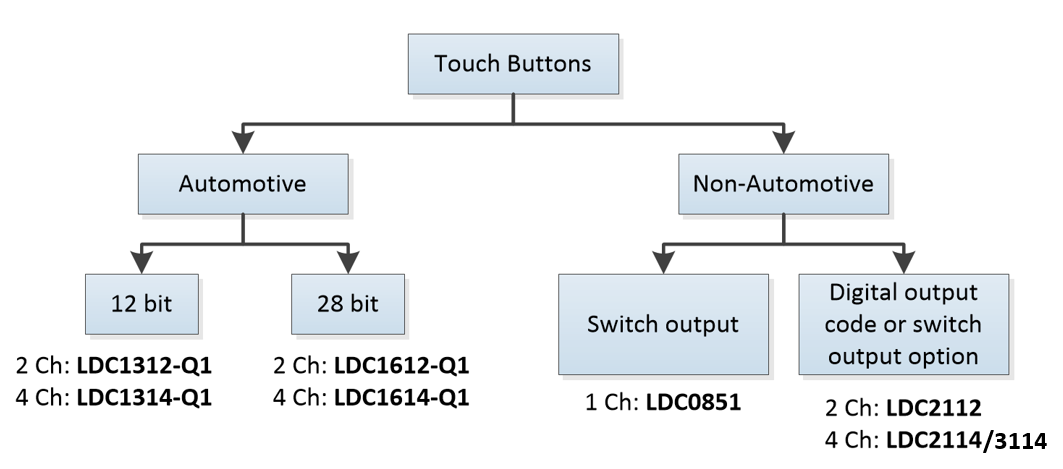SLYA048B March 2020 – June 2021 FDC1004 , FDC1004-Q1 , FDC2112 , FDC2112-Q1 , FDC2114 , FDC2114-Q1 , FDC2212 , FDC2212-Q1 , FDC2214 , FDC2214-Q1 , LDC0851 , LDC1001 , LDC1041 , LDC1051 , LDC1101 , LDC1312 , LDC1312-Q1 , LDC1314 , LDC1314-Q1 , LDC1612 , LDC1612-Q1 , LDC1614 , LDC1614-Q1 , LDC2112 , LDC2114 , LDC3114 , LDC3114-Q1
- Trademarks
- 1Inductive and Capacitive Theory of Operation
- 2FDC: Capacitive Level Sensing
- 3LDC: Inductive Touch Buttons
- 4LDC: Incremental Encoder and Event Counting
- 5LDC: Metal Proximity Sensor
- 6Revision History
3.3 Device Selection
Figure 3-2 shows the device selection flow chart.
 Figure 3-2 Inductive Touch Device Selection Flow Chart
Figure 3-2 Inductive Touch Device Selection Flow ChartTable 3-1 Device Recommendations
| Device | Features/Benefits |
|---|---|
| |
| |
| |
|